Mick Ralphs’ Hoople and Bad Co Gear
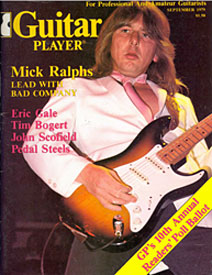 Does it get any better than Bad Company for classic rockage? I’ll answer that for you: No!
Does it get any better than Bad Company for classic rockage? I’ll answer that for you: No!
For years I’ve held onto an old Guitar Player with Mick Ralphs on the cover, and of course now I can’t find it…but I did find the interview online.
In it Mick goes into some pretty decent gear details about his time in Mott the Hoople (yes, they recorded more songs than “All the Young Dudes,” written by David Bowie and one of my least-favorite Mott tunes), and about his time in the aforementioned powerhouse known as Bad Company.
Mott Gear
> On the album Mott the Hoople he used an SG Les Paul.
> On the album Mad Shadows he used a ’54 Gold Top Les Paul “with the white pickups” (cream P-90s). Here’s a fast version of “You Really Got Me” with that guitar (can’t be embedded).
> After touring with Mountain, he got into Les Paul Juniors. “[Leslie West] told me that it was the bottom of the line Les Paul, but that it had a good pickup on it. Even though it had one pickup, it was real ballsy. I loved it because it was like a hunk of wood with two knobs on it. I found one for about $100 in a junk store. I used that guitar constantly for the rest of Mott the Hoople, usually through a 100w Marshall amp.”
> On that tour he picked up a ’52 Fender Esquire (Tele) in an L.A. pawn shop, also for $100. “Somebody had put a Gibson humbucking pickup on it between the Fender pickup and the neck.”
Bad Gear
Q: What did you use to record the first couple of Bad Company albums?
I used the Fender Esquire for rhythm because it’s always nice and clean. Then I used the Les Paul Junior for the lead parts…always through a 100w Marshall, usually without effects.
I did use a pedal on songs like “Bad Company” – a Morley, which is a big foot pedal that gave me almost a Leslie-like effect, very watery. I was always trying to get a Leslie effect, but every time I’d use a Leslie on the road it wasn’t loud enough.
Then people started making phasers and flangers. I got into using an MXR Phase 90, and then the Phase 100 when they came out with that – it has more sweep.
My guitar used to go through an MXR phaser into an Echoplex, and then into the amp. That’s all the gadgets I’ve ever used, except for a wah-wah that I used once…. But that effect got so overdone I just didn’t want to use it [anymore].
Several posts on the interwebz talking about Mick using Ampeg V4s live, as you can see here:
The Secret: Open Tunings
One reason Mick’s Bad Company chords ooze tone is because he cheated! He used open tunings. More from the GP interview:
“Movin’ On,” “Can’t Get Enough” and a lot of other songs are in open tunings.
When I sit down and write a rock and roll song, I pick up an open-tuned guitar because I find it keeps me down to about three or four chords. And to me, the best rock and roll songs have got three or four chords in them and no more. [Malcolm and Angus listened!]
I write songs in an ordinary key – like in open A or G – and then when I give them to Paul [Rodgers] we change them, and whatever key he feels most comfortable in is the key I go to.
It just so happened that “Movin’ On” and “Can’t Get Enough” suited his voice best in C. So rather than using a capo, I tuned my guitar up to an open C: C, C, G, C E, C, low to high….
I have to use very light Ernie Ball strings on a Strat to do this. You have to change the strings every day because of the tension.
When you get up in C it’s very high and bright. It’s quite an unusual-sounding tuning, real sprightly and clean. I use it a lot for slide – it gives a real full sound.
I play rhythm and leads in open tunings, and I play a lot of songs in standard tunings too.
> On the tune “Take the Time” he used an Esquire tuned to open A for the rhythm track.
I played it at a low volume so it wouldn’t distort, with the pickup selector switch in the middle [which then included the Gibson humbucker]….
I think I used the Marshall amp for that solo. I also used a Mesa/Boogie amp on that album for the real screaming solos because the Marshall would be so loud it would drive everyone out of the room.
Later Bad Co Deets
> By the time of this interview – ’79, after ’78’s Desolation Angels – he toured only with Strats. He says in the interview he removed the bars and blocked the trem blocks with wood so the guitars would stay in tune better.
> He preferred to to keep the selector switch “in between pickups…all the time.”
> He also preferred the sound of the older Fender pickups.
Live signal chain:
First it goes to a Roland Boss Chorus that’s on a slow sweeping phase, barely detectable. This is on all the time. From there I have a stereo line, one of which goes into the Echoplex [on all the time, kicked on for a subtle echo at times]. That lead goes into one Marshall head, and the other lead from the Roland goes into the other [Marshall] head.
> Each Marshall head drives one cabinet on the bottom. “A couple of years ago I used to be on 10 [Vol] on the Marshalls, now I’m on 4.”
> He used Ernie Ball strings, 10-52, except for the open tuning guitars where use used 9-42.
> Gold Herco picks, “sort of medium-hard. I use the pick the wrong way around [the fat end hitting the strings].”
More
From the interview:
> After going through several Les Pauls, Mick’s favorite was – no surprise – a ’59 ‘burst. “It’s all beaten up, but it’s a real screamer.”
> Mick says he helped design the old Ibanez Artist guitar, aka the Greco MR-800.
> He didn’t practice much, found it “like homework.” He preferred to play in band situations.
Category: Boss/Roland, Echoplex, Esquire, Gibson, Les Paul, Les Paul Junior, Marshall, Mick Ralphs/Bad Company, Morley, MXR, SG, Strat





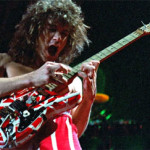
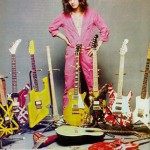
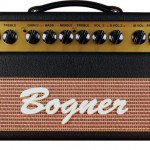
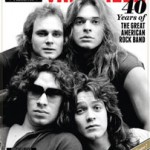
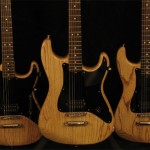


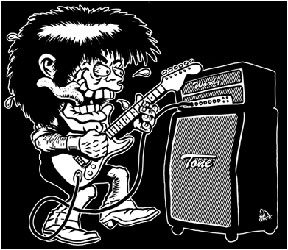

Can’t Get Enough always sounded a bit off when I would try and play it by ear. Guess Open C tuning would explain that.
Awesome! I must be old, I remember that cover of Guitar Player!
I built myself a Single Cut Les Paul Jr. specifically to get Mick’s Mott the Hoople tone. Now I have to go try that open C tuning & see what shakes loose. Good article!